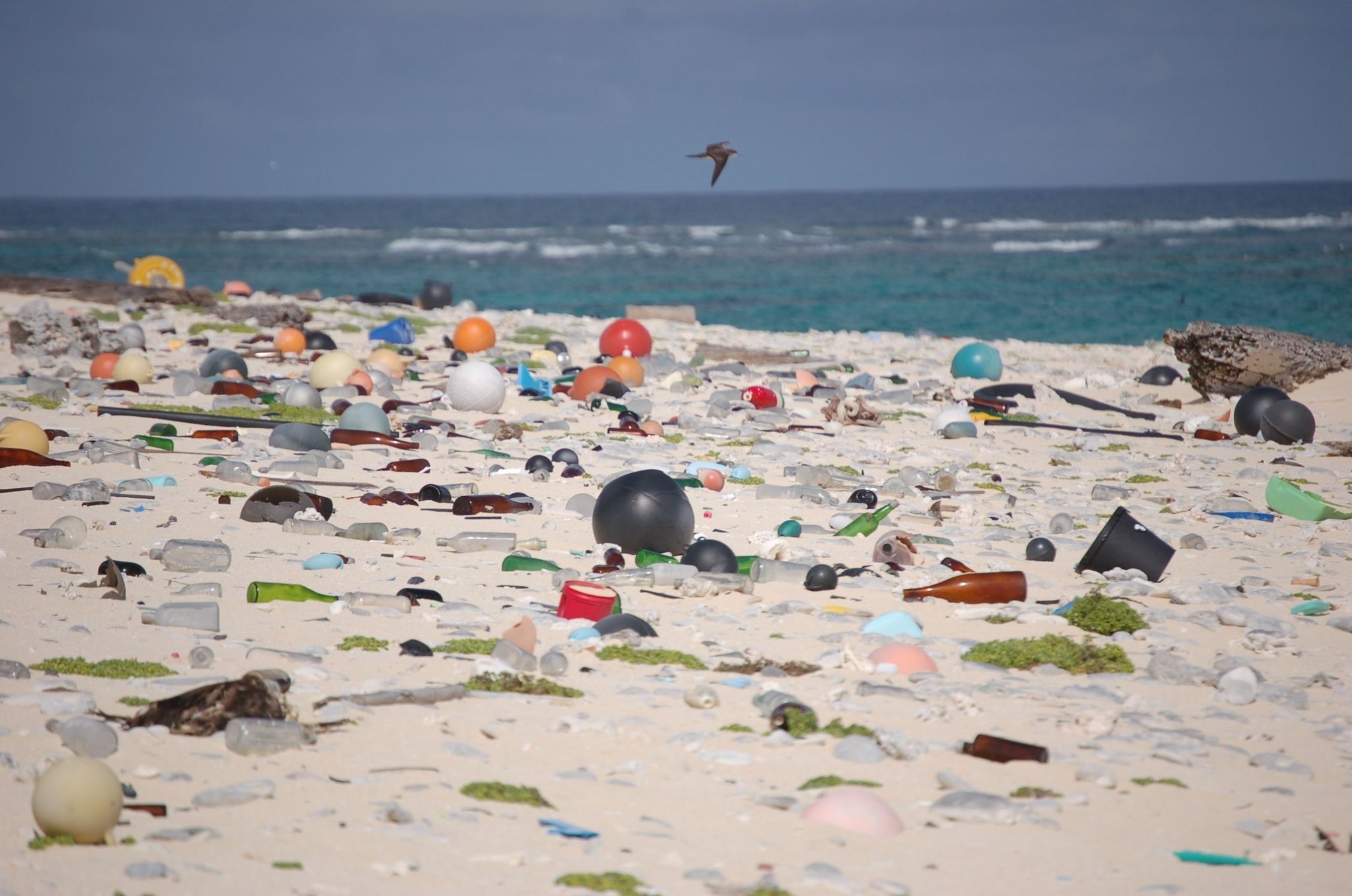In this article Elizabeth Claire Alberts describes Charles Moore’s discovery of microplastics throughout the ocean, freshwater rivers and lakes, and even in mist and rain.
‘Our life is plasticized’: New research shows microplastics in our food, water, air
by Elizabeth Claire Alberts / Mongabay
- Microplastics, plastic pieces smaller than 5 millimeters, have become increasingly prevalent in the natural world, and a suite of studies published in the last three years, including several from 2020, shows that they’ve contaminated not only the ocean and pristine wildernesses, but the air, our food, and even our bodies.
- Past research has indicated that 5.25 trillion plastic pieces are floating in the ocean, but a new study says that there are 2.5 to 10 times more microplastics in the ocean than previously thought, while another recent study found that microplastic “hotspots” could hold 1.9 million pieces per square meter.
- Other emerging research suggests that 136,000 tons of microplastics in the ocean are being ejected into the atmosphere each year, and blowing back onto land with the sea breeze, posing a risk to human health.
- Microplastics are also present in drinking water, and edible fruits and vegetables, according to new research, which means that humans are ingesting microplastics every day.
In 1997, Charles Moore was sailing a catamaran from Hawaii to California when he and his crew got stuck in windless waters in the North Pacific Ocean. As they motored along, searching for a breeze to fill their sails, Moore noticed that the ocean was speckled with “odd bits and flakes,” as he describes it in his book, Plastic Ocean. It was plastic: drinking bottles, fishing nets, and countless pieces of broken-down objects.
“It wasn’t an eureka moment … I didn’t come across a mountain of trash,” Moore told Mongabay. “But there was this feeling of unease that this material had got [as] far from human civilization as it possibly could.”
Moore, credited as the person who discovered what’s now known as the Great Pacific Garbage Patch, returned to the same spot two years later on a citizen science mission. When he and his crew collected water samples, they found that, along with larger “macroplastics,” the seawater was swirling with tiny plastic particles: microplastics, which are defined as anything smaller than 5 millimeters but bigger than 1 micron, which is 1/1000th of a millimeter. Microplastics can form when larger pieces of plastics break down into small particles, or when tiny, microscopic fibers detach from polyester clothing or synthetic fishing gear. Other microplastics are deliberately manufactured, such as the tiny plastic beads in exfoliating cleaners.
“That’s when we really had the eureka moment,” Moore said. “When we pulled in that first trawl, which was outside of what we thought was going to be the center [of the gyre], and found it was full of plastic. Then we realized, ‘Wow, this is a serious situation.’”
This new research shows that there’s actually a larger quantity of plastic in the ocean than previously thought, and that the plastic even enters the atmosphere and blows back onto land with the sea breeze. Recent studies also indicate that plastic is infiltrating our bodies through food and drinking water.
Originally published on 15 July 2020. Read the rest of the article here: https://news.mongabay.com/2020/07/our-life-is-plasticized-new-research-shows-microplastics-in-our-food-water-air/
Featured image: Marine debris litters a beach on Laysan Island in the Hawaiian Islands National Wildlife Refuge, where it washed ashore. Image by Susan White / USFWS.


I was painting something today with latex (plastic) paint, thinking about all the micro and nanoplastic paint particles added every single day to the environment. It is truly horrifying what we’ve done to the world.
A recent article said the average person ingests 5 grams of plastic per week, which is the equivalent of eating a credit card.
Another article said a major source on land comes from tire wear. The microparticles were found to stimulate the growth of plant roots by aereating the soil, but that they retard growth once they get inside the plants.
Plastic is also one of the prime suspects in the alarming decline in human male fertility, with sperm counts in the developed world falling more than 30%, since 1975.
Mark you need to make up your mind. Is overpopulation a problem or not? If yes, why is a decline in male fertility” alarming”?
Or is overpopulation only a problem in the third world?